2022 Toyota Tundra First Drive Review: All Grown Up and Somewhere to Tow

FAST FACTS
| Engine: | 3.5L V6 Turbo |
| Output: | 348 hp, 405 lb-ft (base), 389 hp, 479 lb-ft (SR5 up), 437 hp, 583 lb-ft (hybrid) |
| Transmission: | 10AT, 4WD |
| US fuel economy (MPG): | 18/23/20 (V6 4x2) |
| CAN fuel economy (L/100KM): | 13.1/10.2/11.8 (dest) |
| Starting Price (USD): | N/A (see text) |
| As-Tested Price (USD): | N/A (see text) |
| Starting Price (CAD): | N/A (see text) |
| As-Tested Price (CAD): | N/A (see text) |
The full-sizer has long lived in the shadow of the mid-sized Tacoma, not to mention the trucks of the Big Three. Does the long-awaited redesign have what it takes to step into the light?
It’s hard to overstate how long ago 2006 was. We were roughly halfway through the second term of George W. Bush—or if you prefer, right at the beginning of Stephen Harper’s prime ministry (this Yankee is trying to be more sensitive to cross-border concerns). Closer to home, my oldest daughter was born. And in February of that year, Toyota revealed the current generation of the Tundra for the 2007 model year.
Get a Quote on a New Toyota TundraThe US has had three presidents in that time. Canada has handed power to Justin Trudeau. And my daughter? She’ll be driving next year, not long after this next generation of Tundra begins appearing in showrooms.
Disclosure: Toyota flew journalists to San Antonio, Texas, feeding and housing them for two nights.
Technical details
As we noted last month, Toyota has thrown nearly everything away from the old Tundra in developing the new truck. Under the hood, the V8 is gone, replaced by a 3.5-liter twin-turbocharged V6 (called the iForce) driving the wheels via an all-new 10-speed automatic transmission. Further, the iForce Max adds a motor/generator between the engine and transmission, making this the first hybrid truck from Toyota.
The iForce V6 in most trims produces 389 hp and 479 lb-ft of torque, while the hybrid iForce Max bumps those numbers to 437 hp and 583 lb-ft. Interestingly, the base-model SR package produces less (348 hp and 405 lb-ft) out of the same engine. Toyota calls the engine in the SR package the “standard” tuning, while “SR5 and up feature [the] high-output tuning of the TT V6” per Josh Burns of Toyota PR.
Fuel economy estimates have only been released for the non-hybrid V6 – a 4×2 model is estimated at 18 mpg city, 23 mpg highway, and 20 mpg combined on the EPA cycle; drop each of those figures by one mpg for the 4×4 model. That’s a healthy improvement over the outgoing V8, which in my experience struggled to manage 15 mpg over a long highway drive.
Beyond the powertrain, Toyota was keen to show off the bits that aren’t often seen—an all-new, fully boxed frame. Journalists were treated to a brief tour of a newly built part of Toyota’s San Antonio truck factory where a new technique of curved laser welding allows the frame sections to be strategically designed with bits of thicker high-strength steel in required areas, while maintaining relatively light weight throughout the truck frame. I can’t say that I can definitively tell you that the strength difference is noticeable from behind the wheel (nobody has a butt that is THAT finely tuned) but the Tundra now has a payload capacity (variable, depending on equipment) of up to 1,940 pounds (880 kilograms) and a maximum towing capacity of 12,000 pounds (5,443 kg). Toyota clearly has confidence in this frame to stand up to proper truck use.
However, I can confidently assert that the switch to coil springs and a multi-link suspension for the rear of the Tundra makes a big difference in how the truck drives—both under load and unladen. Leaf springs can certainly handle a heavy load, but are hard to keep under control. Ram has shown over the last few years that switching to a rear coil spring setup makes a significant difference for the better on ride quality—so Toyota has followed suit. And it’s worth the change.
Optional on several trims is a rear air suspension that helps to level the truck when the bed is loaded, or when towing.
SEE ALSO: 2020 Toyota Tacoma TRD Pro ReviewThe Tundra is available in two different cab configurations, and with three different beds: The DoubleCab is the shorter of the two cabs, which can be had with either 6.5-foot or 8.1-foot beds, while the CrewMax has much more rear leg room, and is offered with 5.5-foot and 6.5-foot beds.
If you’ll frequently be driving adults (or taller kids like mine) and can live without the eight-foot bed option, go for the CrewMax. The additional legroom and comfort are well worth the difference. For reference, I’m six feet, four inches tall, and absolutely cannot sit “behind myself” with the driver’s seat adjusted even extremely close to the dash. Further, the hybrid powertrain can only be fitted to the larger CrewMax cab, likely due to the battery pack being placed beneath the rear bench seat.
Every Tundra bed is, similar to the Tacoma, made of a composite material that won’t rust and is highly resistant to damage. For some reason, however, Toyota offers a spray-in bedliner to protect the non-rusting bed from rusting. Someone out there tell me why this is needed, because it’s beyond me. All Tundras are equipped with a tailgate release button on the keyfob. Further, on higher trims (Limited and above) there is a tailgate release button integrated into the driver’s tail lamp. I can see this being useful in a few situations — Toyota suggests a bump of the button with an elbow when both arms are overloaded with groceries or whatever. My thought? Accessing the truck bed while a trailer is hitched, as it can be a long reach to a center-mounted tailgate latch over a hitch. Now, this won’t work if you have a large tongue jack on the trailer, but in some instances this could be handy.
Packages and options
Toyota has long offered a number of packages and trims for their trucks, and the latest Tundra is no different. Starting from base and going up, these packages are: SR, SR5, Limited, Platinum, 1794 Edition, and TRD Pro. Further, within a few of these trims, TRD Off-Road packages are available with a few (surprise) off-road bits, and a TRD Sport package is available in the SR5 trim that goes the other direction to make it look more of a street machine with big wheels and a lowered suspension.
While the below list is non-exhaustive, I’ll try and give you the highlights of the differences between each package:
SR: the base truck, fitted with 18” steel wheels and black plastic trim.
SR5: the likely volume model, Toyota’s long-running trim package that I saw so often in the Eighties that I thought it was the model name of the truck. The SR5 gives you:
- LED fog lamps
- 120v/400W AC power outlet in the bed, paired with LED bed lights
- Standard hitch receiver with trailer connectors — along with a tow/haul mode and a trailer brake controller
- Rear center armrest for the 60/40 split bench
Limited: Leather, chrome, and 20” alloy wheels with low-profile tires.
- This one has the nifty tailgate release switch integrated in the driver’s taillight
- Integrated LED turn signals in the side mirrors
- 14” touchscreen standard
- Heated/ventilated front seats – heated steering wheel, too
- Leather steering wheel and shift knob to go with SofTex-trimmed seats
- Blind spot monitoring
Platinum and 1794: These two trims are very similar – just with a different style. Platinum has a lot of dark chrome and color-keyed features along with dark leather-trimmed seats, while the 1794 Edition is more of a Cowboy Cadillac with chrome and Texas/Western themed interior trim.
- 12 speaker JBL premium audio
- Qi wireless device charging
- 3” digital instrument panel
- Trailer backup guide system with Straight Path Assist (more on this later)
- Power-retractable vertical rear window
- Rear door sunshades
- Heated/ventilated front and rear seats
- Power tilt/telescoping steering wheel
TRD Pro: This is the off-road focused model. 33” tires (well, 285/65-18 since the metric system is better) are fitted to new BBS alloy wheels that are exclusive to the TRD Pro. Other features:
- A specific grille with large TOYOTA lettering – also fitted with marker lights and an LED lightbar
- 5-inch diameter FOX shocks – this gives a lift to the front of just over an inch
- Larger front stabilizer/sway bar
- Aluminum front skid plate (and other underbody protection)
- All-terrain Falken Wildpeak tires
- Funky camouflage-style patterning on the plastic fender flares and on the interior seating surfaces – the available red seats shown here are incredible.
Styling
Toyota tells us that the phrase “Technical Muscle” was used during exterior and interior design of the new Tundra. Technical muscle, to me, evokes memories of steroid-ridden Eastern Bloc Olympic teams of the Eighties, but there’s no question that the new truck is boldly styled. There’s no chance it’ll be mistaken for anything else in the parking lot – love it or hate it, the distinctive geometric lines (especially that massive grille surround) will let everyone know that you’re driving a Tundra.
SEE ALSO: 2020 Ram 1500 Big Horn Review: Putting the ‘Light’ in Light-DutyThe TRD Pro-specific grille eschews the traditional double-oval Toyota logo for tall T O Y O T A lettering that reminded me of the classic Toyota pickups of the Eighties. Every town had one of these jokers who’d peel the first and last two letters of the TOYOTA lettering from their tailgates, leaving “YO” in the center. Upon inspection, the lettering is molded into the TRD Pro grille – but some careful work with a Sawzall and a fine-toothed blade might work to return the YO.
Interior, tech and safety
The new Tundra makes use of Toyota’s latest touchscreen multimedia system, which we first got to see earlier this summer on the Lexus NX. As the outgoing Entune system was clunky and outdated, this is a welcome change: the system responds quickly and intuitively to touch commands, as well as a “Hey Toyota” voice prompt that seems to work quite well using natural language. No more learning the exact syntax the car wants to hear. Also, I forgot to test “Yo Toyota.”
Of note, Toyota triumphantly trumpets the knob. I’ll quote from the press release: “Certain to be a favorite among gloved Tundra passengers, the new system still uses a large, easy-to-grip dial for audio volume.” That a simple knob warrants such a flowery callout in a press release shows how far some automakers have fallen from the ergonomic ideal.
The system can be had with both 8.0-inch and 14.0-inch screens. My only real gripe here is there doesn’t seem to be a home screen – one that will display both audio and navigation on a split screen. There are many times where I’m travelling an unfamiliar area and need a ready view of a map, but would like to know if the opening bars I’m hearing on the radio are a good song or something worth frantically mashing buttons to avoid.
As for safety, every Tundra is now equipped the Toyota Safety Sense 2.5 suite of active safety features, which includes:
- Pre-collision system with pedestrian detection
- Emergency steering assist
- Radar cruise control
- Lane keeping assist
- Automatic high beams
- Road sign assist
- Rear-seat reminder
Moving to the electric power steering on the new Tundra made many of these safety advancements possible. While many—I know—hate lane keeping systems in particular, I find the systems fitted to most Toyotas to be less annoying than most. This should keep most drivers from looking for the buttons to turn off the systems, I’d hope.
Towing
A thing to remember: no automaker would ever invite journalists to test their products at a controlled event like this media preview where there is any real chance of failure. Thus our towing tests were well under the listed maximums – I towed a 26-foot double-axle camper with a Tundra equipped with the optional air suspension, as well as a 16-foot single-axle with a truck fitted with the standard coil springs. Neither truck was fitted with a load-leveling hitch – but I never really felt the need. Both were quite controlled on our short test loop – including an unexpected panic stop when some idiot turning across my path decided to stop in the middle of the road.
I deleted a profanity-laden rant about the state of driver’s education here. You all can imagine what I had to say.
Anyhow, the Tundra pair acquitted themselves nicely. The turbocharged engine emitting a nice whistle when powering up a hill, and the 10-speed transmission shifting smoothly. I’d like, however, to see how the Tundra manages more extreme tests with a big trailer.
One new feature that Toyota demonstrated was its new Trailer Back Guidance with Straight Path Assist. 360-degree cameras help to hitch the truck, while blind-spot monitoring accounted for the size of the trailer with a quick calibration. The Straight Path Assist, however, is a game-changer. Other trucks have trailer reversing features that will steer the rear of the trailer for you. The Tundra, however, will manage the steering once you’ve selected a straight path – which is much harder than you can imagine. I’ll admit defeat here in a previous towing test with a different truck – I blocked the driveway of a campsite as I tried to back a camper into a tight spot, and no amount of fiddling with the dash mounted knob could manage to keep the trailer backing into the spot on anything resembling a path. With the Straight Path Assist here on the Tundra, backing up directly into the spot you want is a breeze. If I towed much at all, this feature alone would sell me.
Driving impressions
The power from both engines is impressive. While we don’t yet know fuel economy estimates for the hybrid, if one were to assume Toyota is trying to ape the other hybrid full-sizer ( F-150 Powerboos t) than we could guess combined economy will be around the 25mpg mark. Just a wild guess, of course – only time will tell. But I felt no real perceptible difference from the driver’s seat between the two engines.
SEE ALSO: 2021 Ford F-150 PowerBoost Hybrid Review: This Isn’t Your Father’s HybridThat’s a good thing in my book. Many a hybrid feels plain weird—especially while braking, where there is a dance between the traditional friction brakes and the regenerative braking offered by the electric motors. Toyota’s been doing the hybrid thing longer than nearly all other automakers, so it’s got this down to a science.
The visibility of all four corners is excellent; while I’ll never say that driving a full-sizer in the city is as easy as a microcar, placing the big beast isn’t as difficult as it might seem. Again, however, we weren’t asked to parallel park in Manhattan—we were in the relatively small city of San Antonio and drove well out of town to a wedding venue that had (only in Texas!) an off-road trail.
My only real gripe with the driving experience? The steering wheel, no matter which Tundra I drove, felt a touch jittery at speed. These are pre-production trucks, so it’s possible some tuning needs to be done to sort out the electric power steering, but I felt more vibration through the wheel than I’d expect. Nothing felt out of control – honestly, it felt as if all-terrain tires with large tread blocks had been fitted, sending a vibration through the wheel.
Further, I have to question why Toyota hasn’t followed the path of Ford with the on-board generator. 400 watts of power might charge a power tool battery – but the 7.2 kilowatts offered in the Ford F-150 Powerboost would be genuinely useful for camping, worksites, or in emergency situations.
Final thoughts: 2022 Toyota Tundra First Drive Review
Sadly, pricing was not available at press time—it’s expected near the end of October. Sales will begin in December of the standard V6 models, while the hybrid iForce Max will appear in the spring of 2022.
Toyota typically sells 100,000 to 150,000 Tundras per year. The mid-sized Tacoma typically doubles that, while the Big Three sell significantly more respectively. I doubt Toyota wants to flood the market with nearly a million Tundras per year—it doesn’t have that capacity. But this Tundra certainly has the goods to take away sales from every one of its competitors. Whether it will remain competitive fifteen years from now is another question altogether.
[Images: © 2021 Chris Tonn and courtesy Toyota]
Discuss this story at our Toyota Tundra Forum.
Become an AutoGuide insider. Get the latest from the automotive world first by subscribing to our newsletter here.

A lifelong Ohioan, Chris grew up around classic rusty sports cars from Japan and England. He's been covering the automotive industry for nearly 10 years, and is a member of the Midwest Automotive Media Association (MAMA). A family man, Chris drives a Chrysler minivan, and uses his rusty old Miata as a shelf, until the day it is uncovered as a priceless barn find.
More by Chris Tonn




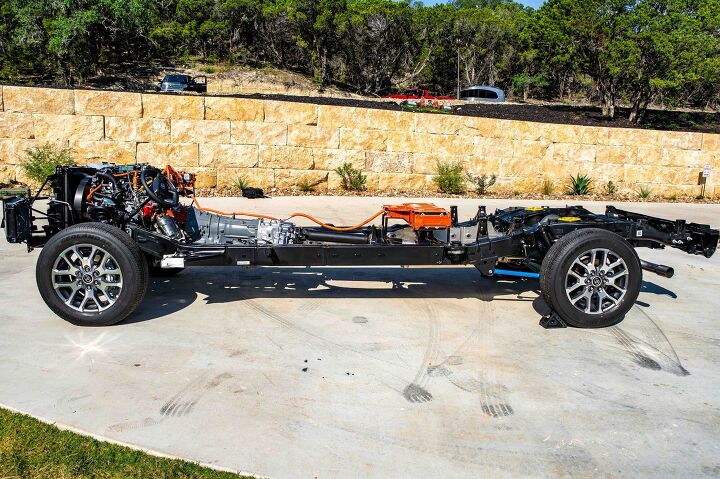


































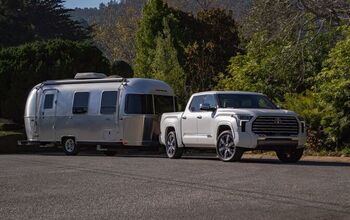

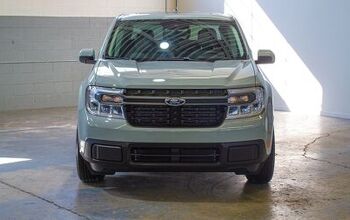



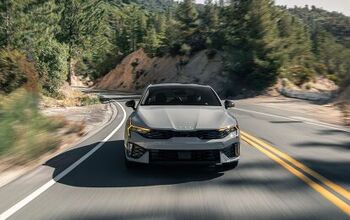
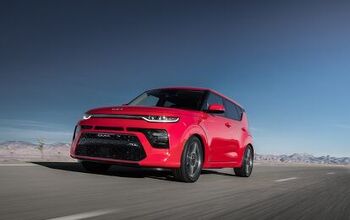


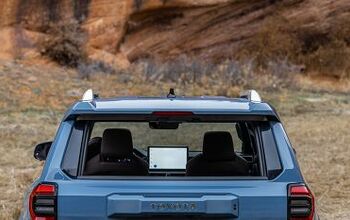
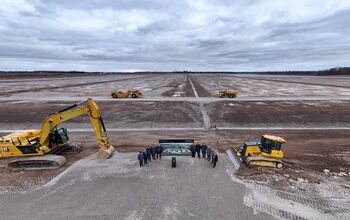
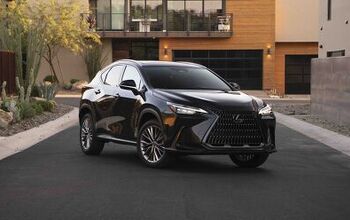
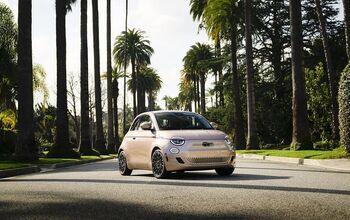
Comments
Join the conversation